Related Research Articles

Bambi, a Life in the Woods is a 1923 Austrian coming-of-age novel written by Felix Salten, and originally published in Berlin by Ullstein Verlag. The novel traces the life of Bambi, a male roe deer, from his birth through childhood, the loss of his mother, the finding of a mate, the lessons he learns from his father, and the experience he gains about the dangers posed by human hunters in the forest. It is also, in its most complete translation, seen as a parable of the dangers and persecution faced by Jews in Europe.

Felix Salten was an Austro-Hungarian author and literary critic in Vienna.
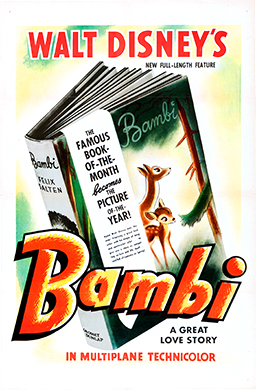
Bambi is a 1942 American animated drama film directed by David Hand, produced by Walt Disney and based on the 1923 book Bambi, a Life in the Woods by Austrian author and hunter Felix Salten. The film was released by RKO Radio Pictures on August 13, 1942, and is the fifth Disney animated feature film.

Josephine Mutzenbacher or The Story of a Viennese Whore, as Told by Herself is an erotic novel first published anonymously in Vienna, Austria, in 1906. The novel is famous in the German-speaking world, having been in print in both German and English for over 100 years and sold over 3 million copies, becoming an erotic bestseller.
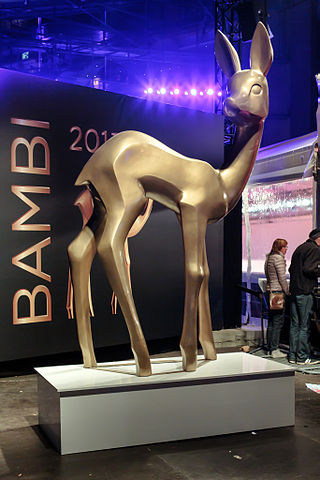
The Bambi, often called the Bambi Award and stylised as BAMBI, is a German award presented annually by Hubert Burda Media to recognize excellence in international media and television to personalities in the media, arts, culture, sports, and other fields "with vision and creativity who affected and inspired the German public that year", both domestic and foreign. First held in 1948, it is the oldest media award in Germany. The trophy is named after Felix Salten's book Bambi, A Life in the Woods and its statuettes are in the shape of the novel's titular fawn character. They were originally made of porcelain until 1958, when the organizers switched to using gold, with the casting done by the art casting workshop of Ernst Strassacker in Süßen.
Barbara Cooney was an American writer and illustrator of 110 children's books, published over sixty years. She received two Caldecott Medals for her work on Chanticleer and the Fox (1958) and Ox-Cart Man (1979), and a National Book Award for Miss Rumphius (1982). Her books have been translated into 10 languages.
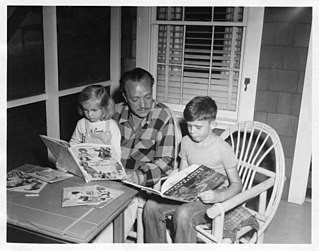
Gustaf Adolf Tenggren was a Swedish-American illustrator. He is known for his Arthur Rackham-influenced fairy-tale style and use of silhouetted figures with caricatured faces. Tenggren was a chief illustrator for The Walt Disney Company in the late 1930s, in what has been called the Golden Age of American animation, when animated feature films such as Snow White and the Seven Dwarfs, Fantasia, Bambi and Pinocchio were produced.
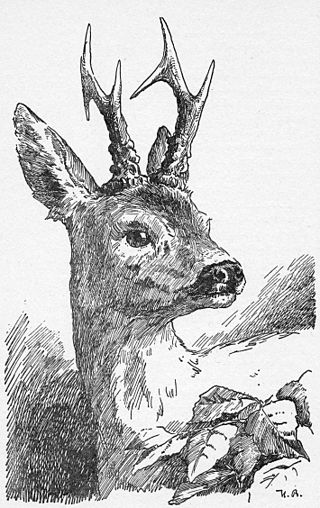
Bambi is the title character in Felix Salten's 1923 novel, Bambi, a Life in the Woods, and its sequel, Bambi's Children, as well as the Disney animated films Bambi and Bambi II. The character also appears in Salten's novels Perri and Fifteen Rabbits.
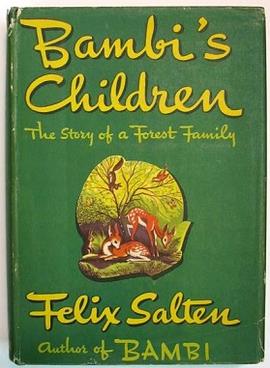
Bambi's Children: The Story of a Forest Family is a 1939 coming-of-age novel written by Austrian author Felix Salten as a sequel to his 1923 work Bambi, a Life in the Woods.
Barthold "Bart" Fles was a Dutch-American literary agent, author, translator, editor and publisher. Among his many clients were Elias Canetti, Raymond Loewy, Heinrich Mann, Joseph Roth, Felix Salten, Ignazio Silone, Bruno Walter and Arnold Zweig.

Perri: The Youth of a Squirrel is a 1938 novel by Felix Salten, author of the 1923 novel Bambi, a Life in the Woods, and is a followup to that book. Its title character is a Eurasian red squirrel. Bambi makes a brief appearance in Perri.
Kurt Wiese was a German-born book illustrator, who wrote and illustrated 20 children's books and illustrated another 300 for other authors.

The Hound of Florence: A Novel is a 1923 novel written by Felix Salten. It is best known today for partly inspiring the 1959 Walt Disney Productions film The Shaggy Dog as well as its sequels and remakes. The novel was first translated into English in 1930 by Huntley Paterson, and the translation has illustrations by Kurt Wiese.
When a work's copyright expires, it enters the public domain. The following is a list of works that entered the public domain in 2016. Since laws vary globally, the copyright status of some works are not uniform.

Fünf Minuten Amerika is a 1931 travel book by the Austrian writer Felix Salten, depicting his tour of 1930 in the United States of America. This is his second travel book, following his account of Palestine, Neue Menschen auf alter Erde, of 1925. Salten himself considered these two books to be his foremost.

Djibi, the Kitten is the last novel of Felix Salten, published originally in 1945 and translated into English in 1946. Similarly as in other Salten's late books, the protagonist is an animal, this time a young female cat called Djibi.

The Shaggy Dog franchise consists of American science fiction-fantasy-comedy films, with three theatrical releases, and two made-for-television films. The overall story is based on the 1923 novel titled The Hound of Florence by Felix Salten. The overarching story of each installment, follows Wilbur "Wilby" Daniels who is cursed and transforms into a large Old English Sheepdog after attaining an ancient Borgian ring and reciting its inscription.
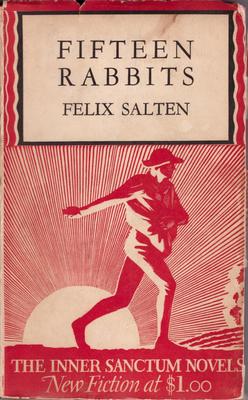
Fifteen Rabbits is a 1929 survival and adventure novel by the Austrian writer Felix Salten. The novel depicts a year in the life of a colony of rabbits in the same forest where Bambi dwells.

Maurice "Jake" Day was an American artist, sculptor, photographer, naturalist and illustrator. He is best known for creating the fawn-like character of Bambi for the 1942 animated Walt Disney feature film Bambi.

Florian: The Emperor's Stallion, also published as Florian: An Emperor's Horse and Florian the Lipizzaner, is a 1933 novel by the Austrian writer Felix Salten, made in 1940 to the film Florian. The novel tells the story of a Lipizzan horse during and after the decline of the Hapsburg monarchy in Vienna, circa 1901–1930.